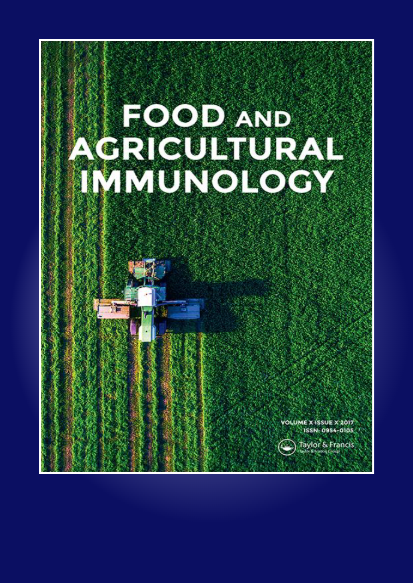蒲公英醇通过MAPK/NF-κB信号通路修复uvb诱导的皮肤屏障损伤
IF 2.1
3区 农林科学
Q3 CHEMISTRY, APPLIED
引用次数: 1
摘要
塔拉沙甾醇(TAL)是一种具有抗炎作用的五环三萜类化合物。采用细胞毒性试验确定TAL和阳性对照甘草酸二钾(DG)的最佳浓度以及UVB的最佳剂量。实验数据表明,与UVB对照相比,TAL对UVB辐射诱导的细胞内活性氧(ROS)具有清除活性。采用酶联免疫吸附试验(ELISA)检测各组皮肤屏障相关因子的含量,然后采用ELISA和定量聚合酶链式反应(qPCR)检测各组炎症因子、细胞凋亡因子和基因水平的变化。因此,TAL通过调节丝裂原活化蛋白激酶/核因子-激酶结合(MAPK/NF-κB)信号通路,如jun氨基末端激酶(JNK)、p38、细胞外信号调节激酶(ERK)和NF-κ。这些结果表明,TAL通过清除活性氧和调节MAPK/NF-κB信号通路来修复UVB诱导的皮肤屏障损伤。本文章由计算机程序翻译,如有差异,请以英文原文为准。
Taraxasterol repairs UVB-induced skin barrier injury through MAPK/NF-κB signaling pathways
ABSTRACT
Taraxasterol (TAL) is a pentacyclic triterpenoid compound, which has anti-inflammatory effect. Cytotoxicity assay was used to determine the optimal concentration of TAL and positive control dipotassium glycyrrhizinate (DG), and the optimal dose of UVB. Experimental data indicate that TAL has scavenging activity against UVB radiation-induced intracellular reactive oxygen species (ROS) compared to UVB controls. The contents of skin barrier-related factors in the groups were detected by Enzyme-linked immunosorbent assay (ELISA), then ELISA and quantitative polymerase chain reaction (qPCR) were used to detect changes in the inflammatory factors, apoptosis factors, and gene levels in the groups. Therefore, TAL stabilised the levels of inflammation, apoptosis, and skin barrier-related factors by regulating Mitogen-activated protein kinases/nuclear factor-k-gene binding (MAPK/NF-κB) signalling pathways, such as jun-amino-terminal kinase (JNK), p38, extracellular signal-regulated kinase (ERK), and NF-κB. These results suggest that TAL repairs UVB-induced skin barrier damage by scavenging reactive oxygen species and regulating the MAPK/NF-κB signalling pathway.
求助全文
通过发布文献求助,成功后即可免费获取论文全文。
去求助
来源期刊

Food and Agricultural Immunology
农林科学-毒理学
CiteScore
5.30
自引率
6.70%
发文量
52
审稿时长
2 months
期刊介绍:
Food and Agricultural Immunology is an international open access journal publishing original immunological research with applications in food, agricultural, environmental and veterinary science. Submissions describing the use of immunological techniques and methods are particularly welcomed.
The journal aims to expand our understanding of the interactions at the interface of food and immune systems including studies on:
-Development of diagnostic systems – all types of ligand-based assays, e.g. antibody, aptamer
-Application of ligand-based assays for the detection or identification of molecules of interest in food science, agricultural research, veterinary investigations and clinical systems relating to food allergy or sensitivity to agricultural chemicals
-Effects of food on the immune system
-Studies on allergy and allergic reactions
-Investigations into food allergies
-Development of allergen-free food systems
-Development of novel assay formats
-Applications of assay systems to the monitoring of food items in relation to safety and labelling
-Food quality issues, e.g. speciation, adulteration and contamination
-Comparisons between different analytical techniques
The journal publishes research and review articles and is essential reading for food scientists, immunologists and all those concerned with the interaction between food and immune systems.
 求助内容:
求助内容: 应助结果提醒方式:
应助结果提醒方式:


